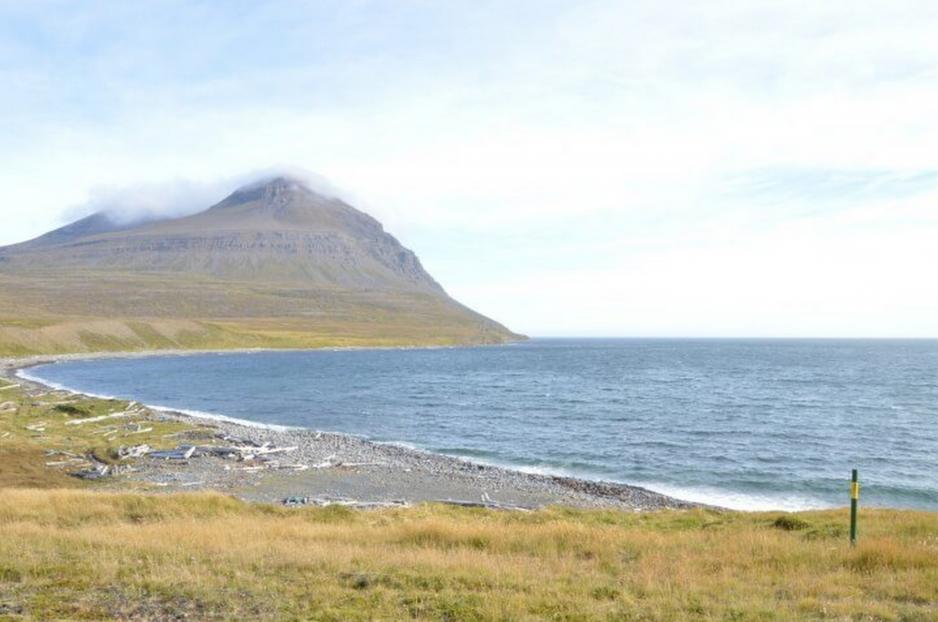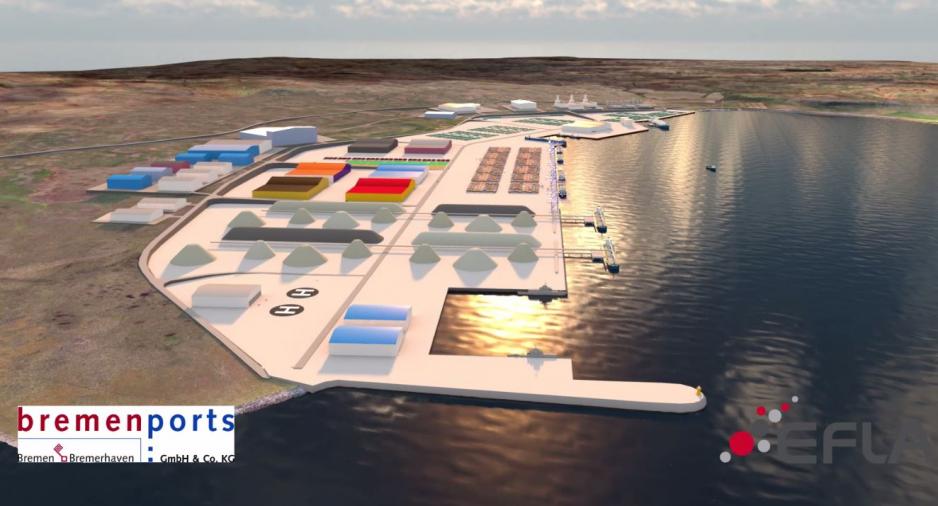Iceland invests in Arctic shipping with development of Finnafjord deepwater port
The port is planned as a hub for ships using the Northern Sea Route.

German port operator Bremenport and its Icelandic partners have signed an agreement to begin construction of a deepwater port and industrial site at Finnafjord, a site in Northeast Iceland. With the harbor Iceland hopes to position itself as a central hub for growing shipping traffic in the Arctic.
Bremenport is partnering with Icelandic consulting company ELFA and the communities of Vopnafjarðarhreppur and Langanesbyggð to create the Finnafjord Port Development Company (FFPD).
The project includes a deepwater port in the Finnafjord in northeastern Iceland in proximity to the community of Langanesbyggð, an associated industrial park, and the connection of the new infrastructure to road networks and supplies of electricity and water.
The aim of the newly formed company is to work on the development of a large-scale shipping and industrial and service area, including a customs- and tariff-free zone attracting international operators.
The partners envision Finnafjord to serve as a transit hub for traffic entering and exiting Russia’s Northern Sea Route. In addition the port may serve as a search-and-rescue base as traffic volume throughout the region increases.
“The increase in trans-Arctic shipment during the last years has truly marked Iceland as an ideal location for a new deep sea port and transshipment Hub in the North Atlantic ocean. Finnafjord is most likely the best location for such a harbor in Iceland,” ELFA’s head of business development, Hafsteinn Helgason, explains.
More than a decade of planning
Discussions surrounding the project originated in 2007 when the two communities together with ELFA began discussions with the Icelandic government to study the feasibility of creating a deep-water port and industrial park.
ELFA emphasizes that more than a decade of studies have proceeded this latest step confirming the economic potential of the new port’s location.
Representatives of the two local communities hold similar sentiments. “We have worked more than a decade towards this milestone. This port will become a new gateway to the world and create new opportunities for north-eastern Iceland,” says Elia Peturson, Mayor of Langanesbyggð. Þór Steinarsson, Mayor of Vopnafjarðarhreppur concurs and sees the Finnafjord project as an essential economic step for Iceland.

An initial Memorandum of Understanding was signed between the parties and Bremenport in 2014 and the now-signed agreement has been developed since 2016. The parties concur that the full development of the project may take up to 40 years, however given the rapid growth of Arctic shipping traffic an accelerated time line appears likely.
Bremenport will hold a 66 percent share of the FPDC with EFLA maintaining 26 percent and local communities holding the remaining 8 percent. Starting next year the current partners are hoping to add additional investors to the project.
Calm and deep waters
The port’s waters were first measured by radar in 2007 revealing a natural depth of 25-70 meters making it very suitable as a deepwater port servicing large ocean-going vessels. Due to Finnafjord’s geographical location and its protective peninsula wave activity is among the lowest in the North Atlantic.
Wave height was studied by the Icelandic Maritime Administration. In fact the anticipated maximum wave height over a 100 year period is lower than the average annual wave height in Reykjavik. This is an important factor as waters throughout the North Atlantic are well-known for challenging wave conditions. Just this past week, large-scale natural gas transfer operations off the coast of northern Norway near Honningsvåg had to be suspended as weather conditions were too severe.
Furthermore, the waters surrounding Iceland are ice-free year-round making it a suitable hub for shipping traffic throughout the year. In addition, the lack of mountain ranges will facilitate connectivity to other parts of Iceland.
In total the port will have up to 6 kilometers of quays supported by up to 1,200 hectares of industrial development.
Port aims at clean technology
The developers emphasize the importance of a sustainable approach to developing the port, including the production of electricity from renewable sources as well as the potential generation of hydrogen, which may serve as a shipping fuel of the future.
Bremenport’s CEO Robert Howe explains that “The change in climate will result in an economic development in this region. The location of the Finnafjord harbor will permanently change international voyages and can lead to significant environmental benefits, as this will reduce emissions.”
FFPD will begin issuing concessions and development rights for the port and industrial land to investors and operators next year and expects construction of the port facilities to occur between 2021-2023.